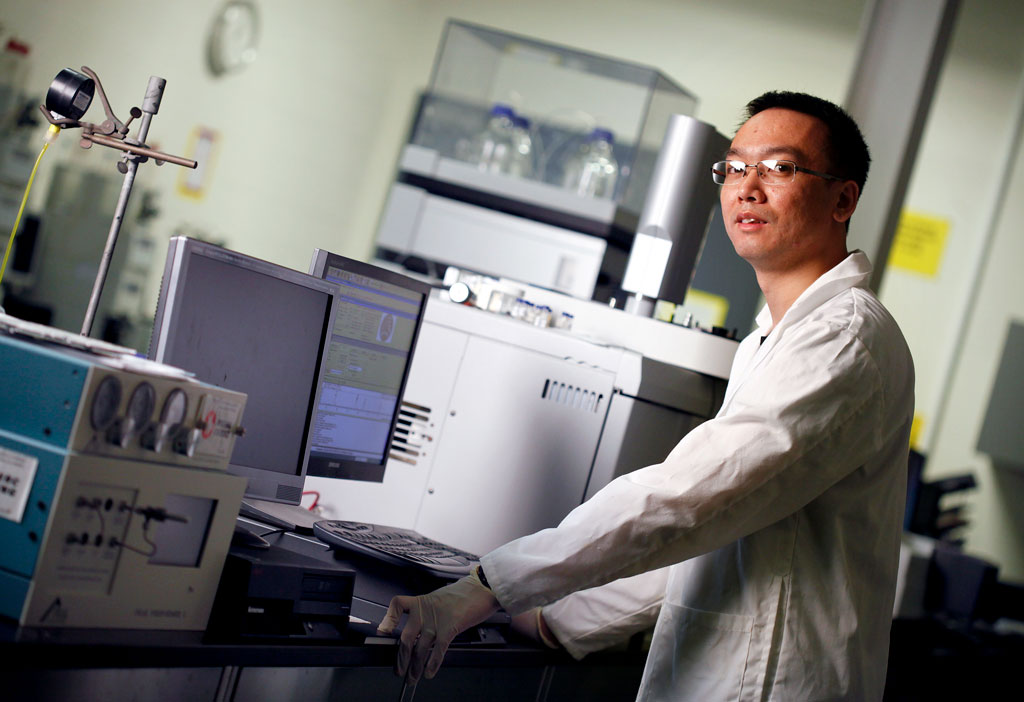Christina Ure is completing her Master of Applied Science in Environmental Engineering.
With a foundation in environmental engineering, Christina Ure knows the future is hers to build.
That’s because her degree from the University of Windsor makes her adept in the valuable art of solving problems.
“As an environmental engineer, we do a lot of problem-solving work for some of the world’s biggest issues,” Ure said. “That gives us a really good base for other fields – whether that’s business, law or medicine.”
Environmental engineering focuses on protecting people from adverse environmental effects —such as pollution — while improving environmental quality. Those who become environmental engineers will often work to improve recycling, waste disposal, public health, and water and air pollution control at companies like Stantec, Pepsi, Petro Canada and General Motors.
But not everyone in the program goes on to become an environmental engineer, said Environmental Engineering department head Paul Henshaw.
“Environmental engineers, all engineers, learn this disciplined approach to looking at problems,” Dr. Henshaw said.
“We teach them to identify the real problem, which often may not be the most obvious one, and establish how they can work towards a solution.”
Henshaw said many students from the University of Windsor have gone on to become professionals in other fields like law and business.
But for students who do pursue environmental engineering, the options are boundless.
Ure was awarded a Queen Elizabeth II Commonwealth scholarship in 2016 which allowed her to study at Aberystwyth University in Wales. She spent four months studying types of grass and researching how they can be chipped and used as different forms of alternative fuel sources.
She was awarded an undergraduate National Sciences and Engineering Research Council (NSERC) scholarship and participated in the Water Environment Association of Ontario student design competition where she placed second in the province.
Henshaw said students at the University of Windsor who participate in the design competition typically place within the top three.

Tao Peng works in the lab at the University of Windsor's Ed Lumley Centre for Engineering Innovation. (Kristie Pearce/UWindsor)
This past September, Ure was awarded a Mitacs and NSERC graduate scholarship to pursue her MASc degree.
She travelled to South Korea where she will engage in part of her graduate studies at Inha University.
“In South Korea, I’ll be working with Door-Hoon Kim, a former post-doctoral fellow at the University of Windsor, and will be focused on producing biofuels from glycerol,” Ure said.
Postdoctoral student Tao Peng’s journey in environmental engineering brought him from Sichuan, China to the University of Windsor.
Peng was awarded the Mitacs scholarship in 2016 to study at Université Pierre et Marie Curie (UPMC) in Paris.
He is now in pursuit of a joint PhD between UWindsor and UPMC where he is focused on developing nanomaterials for degrading pollutants and producing fuels.

Tao Peng works in the lab at the University of Windsor's Ed Lumley Centre for Engineering Innovation. (Kristie Pearce/UWindsor)
Peng returned to UPMC in September to complete the research component of his degree.
“I find the University of Windsor puts more of an emphasis on course and student study,” Peng said.
“They make sure the student understands the basics and then helps the student learn what they’re taught in the lab.”
It’s the small class sizes Peng said helped him grow as a researcher.
“The University of Windsor had instruments that weren’t available in Paris,” Peng said.
“The attention they give to you helps you thrive as a researcher.”

